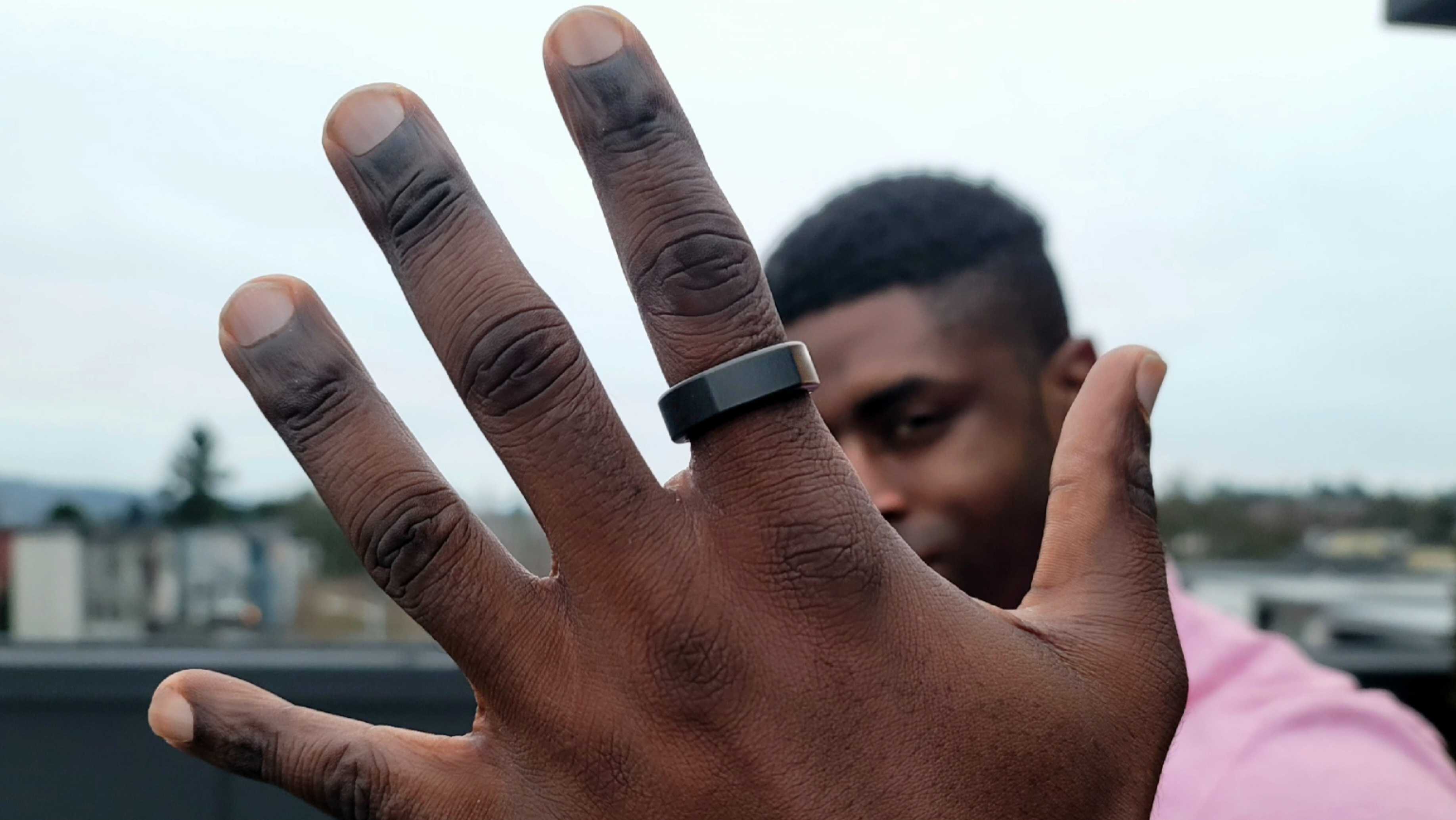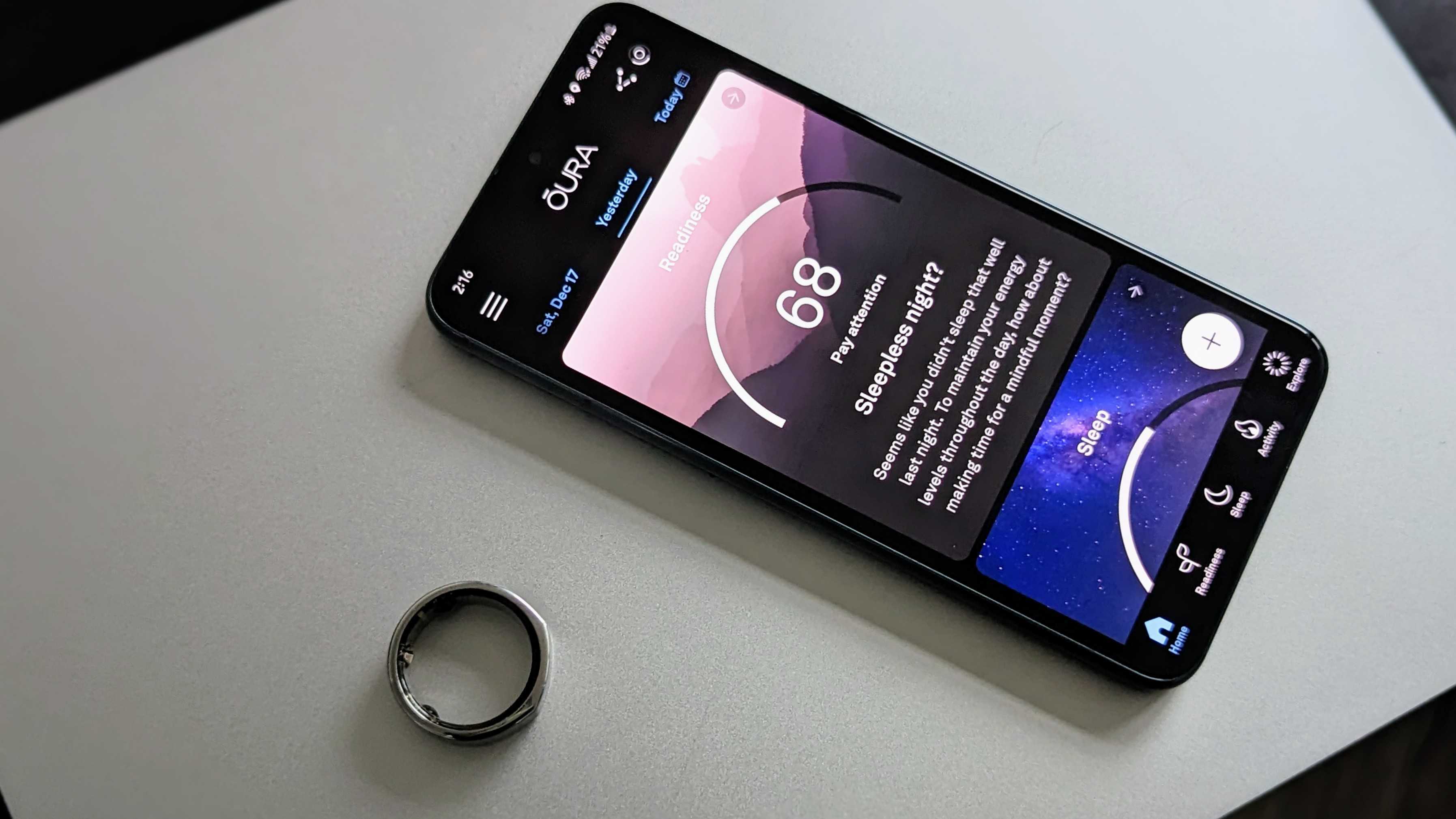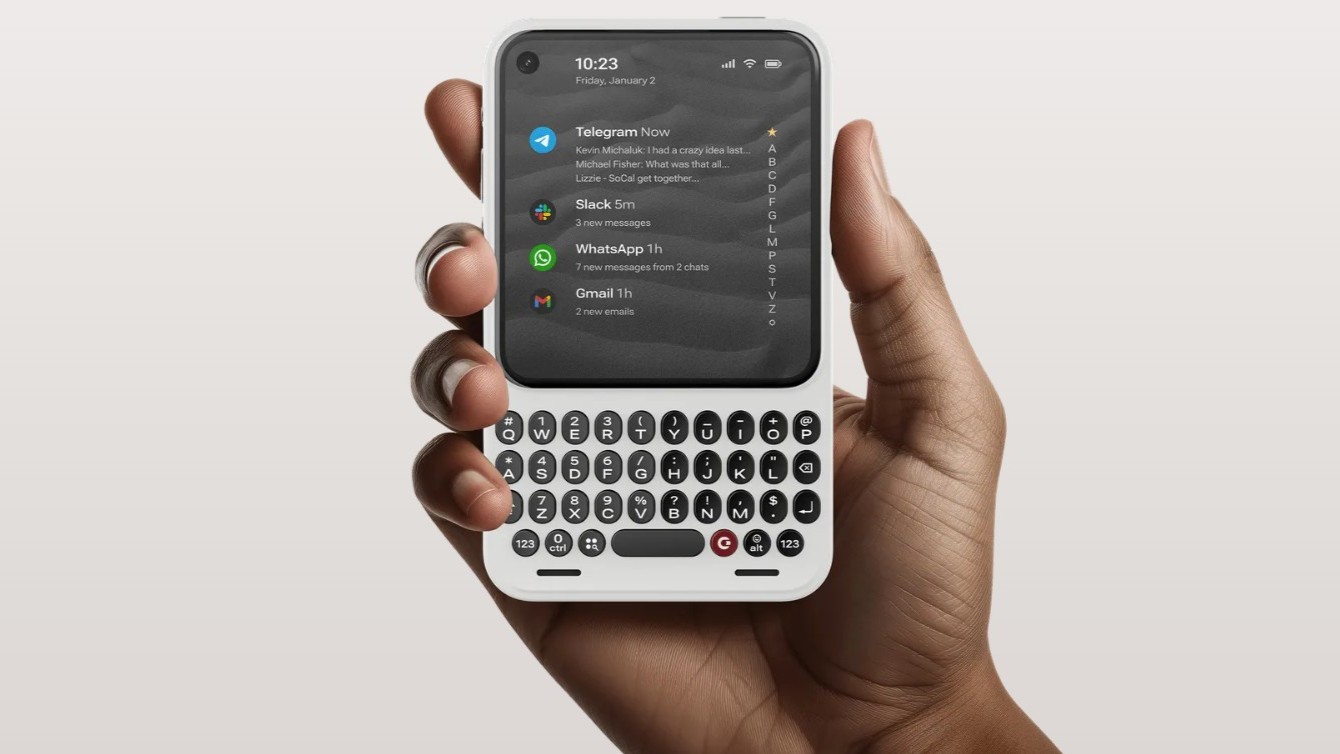Samsung Galaxy Ring vs. Oura Ring Gen 3: Choosing the best smart ring
The Samsung Galaxy Ring vs. Oura Ring is about more than features; it's a legal battle, too.

Challenger approaching
The Samsung Galaxy Ring leaps into the smart ring fray with some major brand recognition and "Galaxy AI" insights, but it's mostly delivering the same health and sleep data as competing brands. It's more about quality assurance than Samsung reinventing the wheel.
Pros
- Thinner, lighter design
- Heart rate alerts and wellness tips
- Ships with charging case
- Limited gestures
- "Find My Ring" feature
- No subscription
Cons
- Quite expensive
- Ony two automatic workouts
- Android-only, some Galaxy phone exclusives

The O.G. smart ring
The Oura Ring Gen 3 launched in 2021 but still remains relevant because Oura continues to find new ways to interpret the same data into greater insights on stress, health, and more. It tracks your sleep at night and your stress and activities during the day.
Pros
- More colors and styles
- More automatic activities detected
- iOS/Android compatible, no exclusives
- Daytime Stress and Resilience
- "Find My Ring" feature
- In-depth reports over time
Cons
- Required monthly sub
- No independent charging case
- Slightly heavier
The long-awaited Samsung Galaxy Ring vs. Oura Ring battle has gone from the courtroom to the market. Now that the Galaxy Ring has arrived, it'll face off against the Oura Ring, the most well-known smart ring available today.
Most of Oura's customers use iPhones, and the Galaxy Ring has exclusive Samsung phone features (though it'll work with many other Android phones). Still, even if the Galaxy Ring makes smart rings more widely known, Android fans may still want to choose an Oura Ring instead.
Samsung sued Oura preemptively, noting that Oura frequently accuses smart ring makers of patent infringement for "features common to virtually all smart rings, such as the inclusion of sensors, electronics, and batteries." Samsung then attempts to argue that the Galaxy Ring is distinct from the Oura Ring.
Despite that, the two rings share many common traits, from health sensors to battery life. Beneath the shiny surface of both smart rings, you'll find some key differences that'll help you decide which is the better fit for your finger.
Samsung Galaxy Ring vs. Oura Ring: Specs
| Category | Samsung Galaxy Ring | Oura Ring (Gen 3) |
|---|---|---|
| Size/ Weight | 7.0 x 2.6mm, 2.3g (size 5) to 3.0g (Size 13) | 7.9 x 2.55mm, 4–6g |
| Materials | Titanium grade 5 exterior, non-metallic interior | Titanium exterior with PVD coating, non-metallic inner molding |
| Water resistance | 10ATM, IP68 | 10ATM |
| Sizes | 5–13 (proprietary) | 6–13 (proprietary) |
| Memory | 8MB | One week of data |
| Battery life | 7 days (sizes 12–13), 6 days (sizes 8–11), or 5 days (sizes 5–7) | Up to 7 days |
| Battery capacity | 17mAh (sizes 5–7), 18.5mAh (8–11), 22.5mAh (12–13) | 15mAh (Size 6) to 22mAh (Size 13) |
| Charging | Case (361mAh) with USB-C cable; 40% charge in 30 minutes | Charging cable and dock (power brick required); 100% charge in 80 minutes |
| Connectivity | BLE 5.4 | BLE |
| Health sensors | Accelerometer, skin temp, PPG: 2PD + 2LED(G) + 2VCSEL(R, IR) | Accelerometer, skin temp, PPG: LEDs (G+R) + IR |
Samsung Galaxy Ring vs. Oura Ring: Design and pricing

The Samsung Galaxy Ring is surprisingly slim for a smart ring. Its 2.6mm thickness matches that of most smart rings, including the Oura Ring Heritage (2.55mm), but at 7mm wide, it's about 1mm thinner than most rival rings.
That also translates into a lighter weight than most smart rings. At 2.3 to 3.0 grams depending on the size, the Galaxy Ring is significantly lighter than the Oura Ring (4–6 grams) and the RingConn smart ring (3–5g), while being slightly lighter than the Ultrahuman Ring Air (2.4–3.6g).
Samsung gave the Galaxy Ring a distinct concave design, where the band sinks inwards in the center before rising along the edges. It's a subtle distinction, but one that makes it stand out from other smart rings that are either fully flat or simply curved.
Get the latest news from Android Central, your trusted companion in the world of Android

Oura sells two versions of its Gen 3 ring: the Heritage and the Horizon. The latter is more expensive because it has a symmetrical rounded design instead of the Heritage's flat-top design. Some users prefer the Heritage because the Horizon feels significantly thicker on all sides, while the Heritage's asymmetry can be distracting in its own way.
Our Oura Ring reviewer also got to test out the Galaxy Ring in New York before Unpacked. While he called the Oura Ring "surprisingly comfortable to wear," he praised the Galaxy Ring as a "ring that feels more like a ring and less like a regular smart ring, which I feel is the ultimate goal of wearable tech: to naturally blend in with your lifestyle." In terms of comfort, the Galaxy Ring comes out on top, even if its thickness ensures it'll still get in the way if you wear it on the wrong finger.

Both the Galaxy Ring and Oura Ring punish people with smaller fingers: petite rings must, by necessity, have smaller batteries than larger ones. That's why a size 5 Galaxy Ring lasts five days, while a size 13 Galaxy Ring lasts seven days. The Oura Ring, too, only lasts seven days with its largest rings.
The Oura Ring, like most smart rings, has a charging cradle where you seat the ring, connected to a USB-C cable. You'll need a power brick to charge it. Samsung came up with the neat idea to ship the Galaxy Ring with a transparent charging case with 361mAh capacity. With it, you can charge your Galaxy Ring on the go, and check the LED indicator to see if it's still charging or fully topped off.
| Category | Samsung Galaxy Ring | Oura Ring (Gen 3) |
|---|---|---|
| Variants | None | Heritage (flat top) and Horizon (thick, uniform circle) |
| Colors | Titanium Black, Titanium Silver, Titanium Gold | Heritage: Silver, Black, Stealth, Gold |
| Row 2 - Cell 0 | Row 2 - Cell 1 | Horizon: Silver, Black, Stealth, Gold, Brushed Titanium, Rose Gold |
| Pricing | $399 for all models | Heritage: $299 (Silver, Black); $399 (Stealth); $449 (Gold) |
| Row 4 - Cell 0 | Row 4 - Cell 1 | Horizon: $349 (Silver, Black); $449 (Stealth, Brushed Titanium); $499 (Gold); $549 (Rose Gold) |
| Subscription | None (May charge for Galaxy AI in future) | $5.99/month |
The Samsung Galaxy Ring is on the expensive side for a smart ring; many indie brands sell their rings in the $250–$350 range. We're curious if future generations will successfully bring down the price, once Samsung has mastered the production process.
The $299 Oura Ring Gen 3 starts off significantly cheaper, but if you want any color besides Silver or Black, you'll end up paying as much or more than Samsung charges—and that includes the gold Galaxy Ring. Plus, Oura charges $70/year for most of its key app features, after a brief 30-day trial membership. Over time, the Galaxy Ring is the more affordable option.
Samsung Galaxy Ring vs. Oura Ring: Health tracking

The Samsung Galaxy Ring and Oura Ring track a lot of the same information, so we'll run through their shared features first:
Sleep: Both rings track your total sleep time, your restfulness (movement during sleep), your sleep latency (how long it takes to fall asleep), sleep stages (REM, deep, etc.), resting heart rate, heart rate variability (HRV), breathing rate, blood oxygen (SpO2), and skin temperature. Both Oura and Samsung convert this data into a simplified Sleep Score in their respective apps, summarizing your nightly recharge quality.
Energy Score: Oura calls it a Readiness Score, while Samsung calls it an Energy Score, but it's the same principle. Your sleep quality, stress levels, and recent workout activity are used to estimate your body's current physical ability to handle whatever the day throws at you.
Heart rate: Both the Galaxy Ring and Oura Ring have continuous heart rate data throughout the day, though we don't know yet how frequently the Galaxy Ring takes a reading; for Oura, it's a one-minute reading every five minutes, assuming you're at rest. Otherwise, you can do an HR spot-check in the app at any time.
Inactivity alerts: Either smart ring will notify you if you're sedentary for too long, unless you turn the feature off. Of course, since neither ring has haptics, you'll have to check your phone notifications to see the alert.
Cycle tracking: Both rings let you log your periods in the app, and then use your health data (especially body temperature fluctuations) to predict future cycles. Oura also has a "pregnancy insights" section of the app, though this mainly extrapolates data based on your estimated due date.

In terms of what's different, we'll have more to say once we've had a chance to properly review the Galaxy Ring and dive into the Samsung Health app with it synced. However, based on Samsung's press materials, there are a few key differences.
The Samsung Galaxy Ring has a heart rate alert feature that gives you real-time warnings about "unusually high or low heart rates" in Samsung Health. Also in Samsung Health, you'll find Wellness Tips that guide you towards individual workout goals. For example, if you're trying to lower your resting heart rate or hit certain sleep goals consistently, you can see a trend graph showing your week's progress in the app.
The Oura Ring puts a lot of emphasis on stress tracking. Its Daytime Stress graph takes data like HRV, motion, and temperature to rate if your day was stressed, engaged, relaxed, or restorative. And your Resilience score determines how draining stress and workouts are on your body, and how quickly you can recover from them. While the Galaxy Ring does track HRV at night, we don't know yet if daytime stress is available.
Oura also provides weekly, monthly, quarterly, and annual reports of your trending health data. So far, we only know of Samsung's daily and weekly reports.
Samsung Galaxy Ring vs. Oura Ring: Fitness tracking

Smart rings don't have the same fitness focus as fitness watches because they aren't designed to sample heart rates as often, especially when your hands are moving quickly and disrupting the readings. So they use automatic workout detection to determine when to switch to a different HR reading mode.
The Oura Ring has over 50 automatic activities it can detect after 10 minutes, from sports to household chores (that link lists the more popular activities). Our Oura Ring reviewer noted that this feature works well in real life, properly identifying when he was dancing or cycling.
The Samsung Galaxy Ring, surprisingly, only has two: running and walking. For everything else, you must use a manual activity. It's limited enough that it feels perfunctory, as if any proper athletes are expected to use the Galaxy Watch 7.
Samsung Galaxy Ring vs. Oura Ring: Smarts and phone connectivity

A smart ring won't give you any of the apps or smarts of an Android smartwatch or Apple Watch. The Oura Ring, as an independent health tracker, doesn't have any phone connectivity beyond the simple Bluetooth LE necessary to send health data to the Oura app.
One key difference that Samsung offers is gestures: While wearing the Galaxy Ring, you can double-pinch your fingers together to trigger an action on your connected phone. Specifically, you can disable an alarm or take a remote photo. Those are the only gestures we know of, and you'll need a Samsung phone to use them; we assume, however, that more gestures will come with time.
Both smart rings have a Lost Ring mode that shows the last-known location of where your phone was when you were wearing the ring. Unfortunately, Oura's Find My Ring mode is iOS only at the moment, and you must use a third-party app to track down its Bluetooth signal. Also, Samsung's ring will flash its LEDs in the lost mode to make it easier to spot, wherever you might have left it.
Samsung Galaxy Ring vs. Oura Ring: Which should you buy?
The Samsung Galaxy Ring should work with most modern Android phones, so long as you install Samsung Health. But there are a few Galaxy AI insights and gestures that only work with a Galaxy phone; given the $399 price tag, it might feel hard to justify buying a Galaxy Ring if you're not getting the full experience.
The Oura Ring (Gen 3) has no such limitations, working equally well on any Android phone or iPhone. It also has a firmer ceiling in terms of what it'll eventually be able to do; we doubt it'll ever have gesture smartphone controls, even with a future Oura generation. It's quite simply there to track your health, sleep, and stress.
In plainer terms, the Oura Ring has gotten years of support to fully realize its potential, while the Samsung Galaxy Ring has only begun to spread its wings and should get years of software support to bolster its weak points, like automatic workouts.

Challenger approaching
Choose the Samsung Galaxy Ring if you need a comfortably light and stylish sleep tracker with health recommendations...and not much else. Don't choose the Galaxy Ring if you have a non-Galaxy phone and FOMO, or if you're already satisfied with your Galaxy Watch for sleep tracking.

The O.G. smart ring
Choose the Oura Ring (Gen 3) if you want insights on your sleep quality, stress, and long-term health changes, or if you want more styles and colors than Samsung offers. Don't choose it if you hate mandatory subscriptions or don't want a ring that's too bulky.

Michael is Android Central's resident expert on wearables and fitness. Before joining Android Central, he freelanced for years at Techradar, Wareable, Windows Central, and Digital Trends. Channeling his love of running, he established himself as an expert on fitness watches, testing and reviewing models from Garmin, Fitbit, Samsung, Apple, COROS, Polar, Amazfit, Suunto, and more.
You must confirm your public display name before commenting
Please logout and then login again, you will then be prompted to enter your display name.
